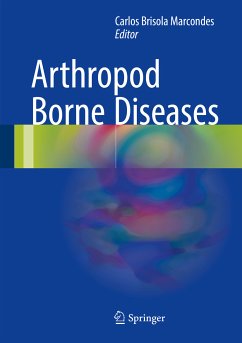Arthropod borne diseases cause enormous morbidity and mortality in most countries, mostly in those situated in tropical areas, but also in temperate regions. This book provides organized information on all arthropod related diseases, to prevent suffering and deaths, for medical students and professionals. Since arthropod borne diseases are present in many regions of the world and can even surprise professionals and lays in non-endemic regions, like malaria in UK and Canada, the author and its many expert collaborators are sure that it will be essential in all hospitals, clinics and medical libraries around the world. As arthropod borne diseases of domesticated animals are very numerous and in some cases related to human diseases, they are also included in the book.
Dieser Download kann aus rechtlichen Gründen nur mit Rechnungsadresse in A, B, BG, CY, CZ, D, DK, EW, E, FIN, F, GR, HR, H, IRL, I, LT, L, LR, M, NL, PL, P, R, S, SLO, SK ausgeliefert werden.









